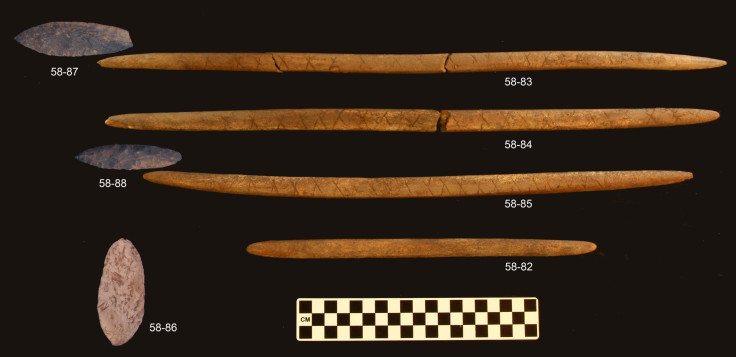Remains Of Ice Age Infants Found In Alaska, Offering Clues About Early Humans In North America

A group of archaeologists have discovered the remains of two Ice Age infants at a site in Alaska, which, according to researchers, represent the youngest human remains from that era ever found in North America. Scientists believe that the infants were buried more than 11,000 years ago.
According to a study, published in the journal Proceedings of the National Academy of Sciences, the burial site and its artifacts could help researchers better understand the funeral practices and other rituals among people who inhabited the area thousands of years ago. The discovery was made in the fall of 2013 at an excavation of the Upward Sun River site, near the Tanana River in central Alaska, the researchers said.
The remains were found at the site of a 2010 excavation, where the cremated remains of another three-year-old child were also found. The researchers said that the latest discoveries of the bones of the two infants were found in a pit about 15 inches below a residential hearth where the 2010 remains were discovered.
“Taken collectively, these burials and cremation reflect complex behaviors related to death among the early inhabitants of North America,” Ben Potter, a researcher at the University of Alaska Fairbanks and the study’s lead author, said, in a statement.

Researchers also found unique grave offerings at the ancient burial site, such as shaped stone points and antler foreshafts decorated with abstract curved lines, which represent some of the oldest examples of such weapons in North America.
“The presence of hafted points may reflect the importance of hunting implements in the burial ceremony and with the population as whole,” the researchers wrote in the study.
Further analysis of the dental and skeletal remains helped scientists determine that one of the infants survived birth only by a few weeks, while the other died in its mother’s womb.
The researchers also found remains of a salmon-like fish and ground squirrels in the burial pit, which suggest that the site was likely occupied by hunter-gatherers between June and August.
“The deaths occurred during the summer, a time period when regional resource abundance and diversity was high and nutritional stress should be low, suggesting higher levels of mortality than may be expected give our current understanding” of survival strategies of the period, the researchers wrote in the study.
© Copyright IBTimes 2024. All rights reserved.






















